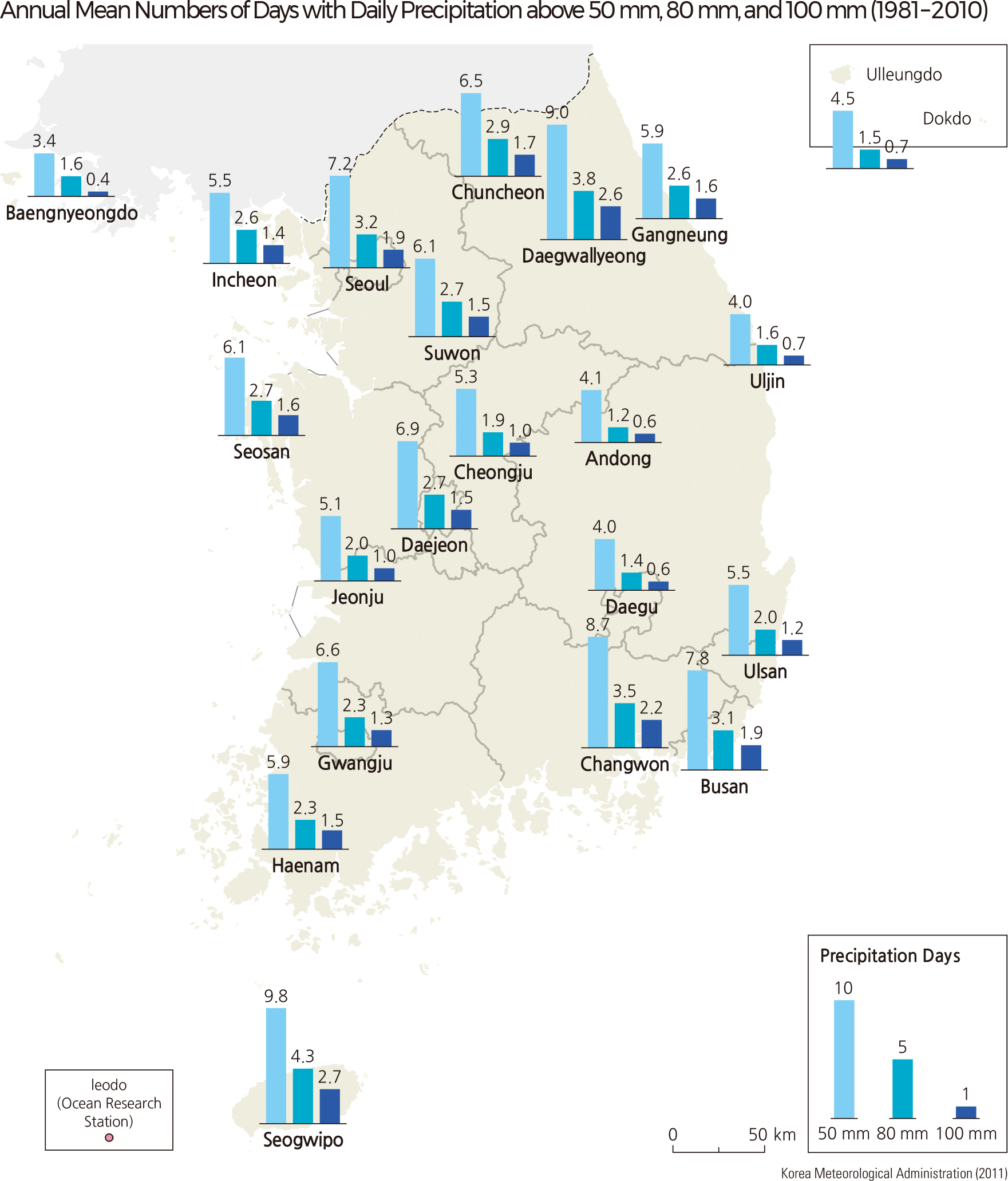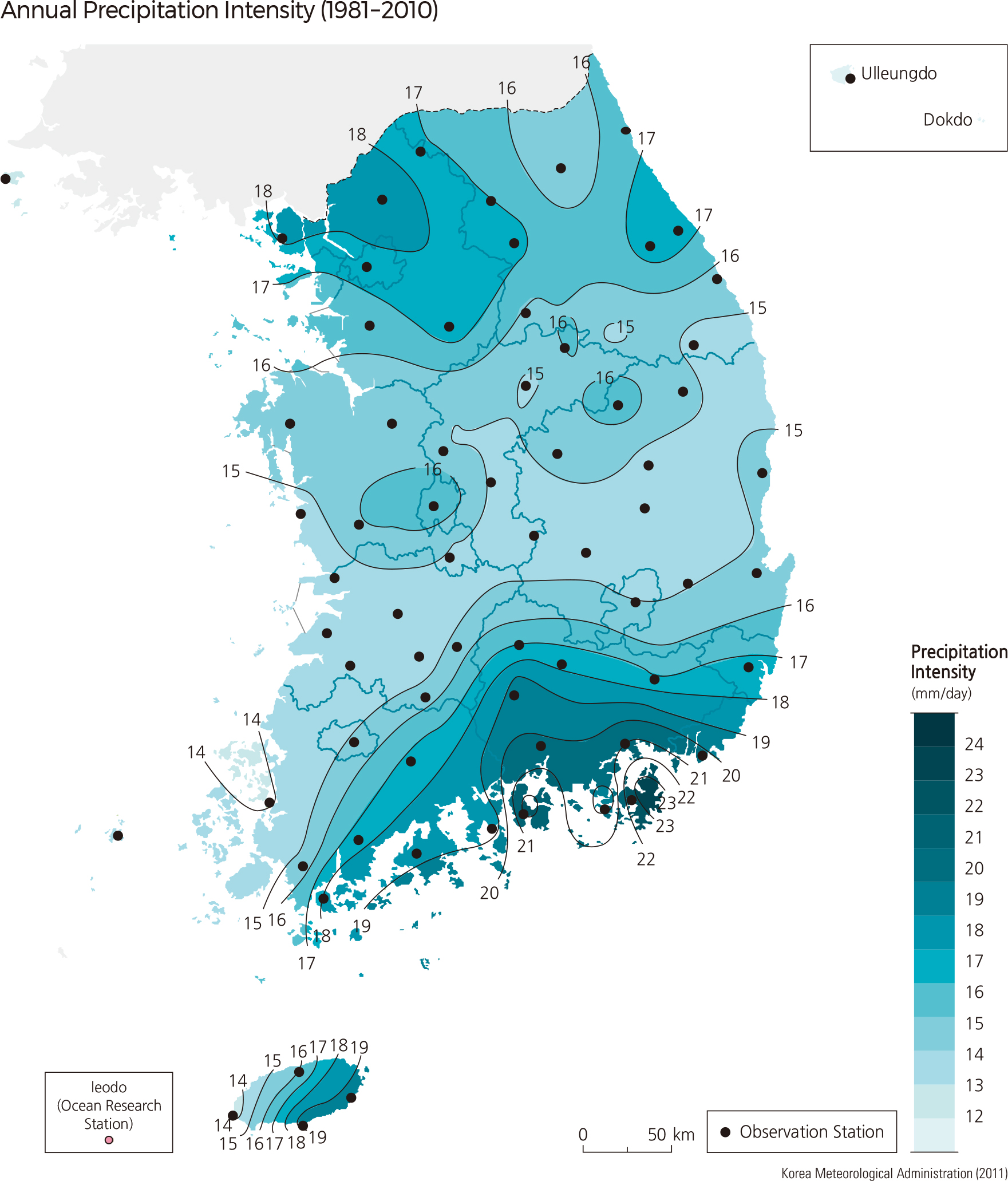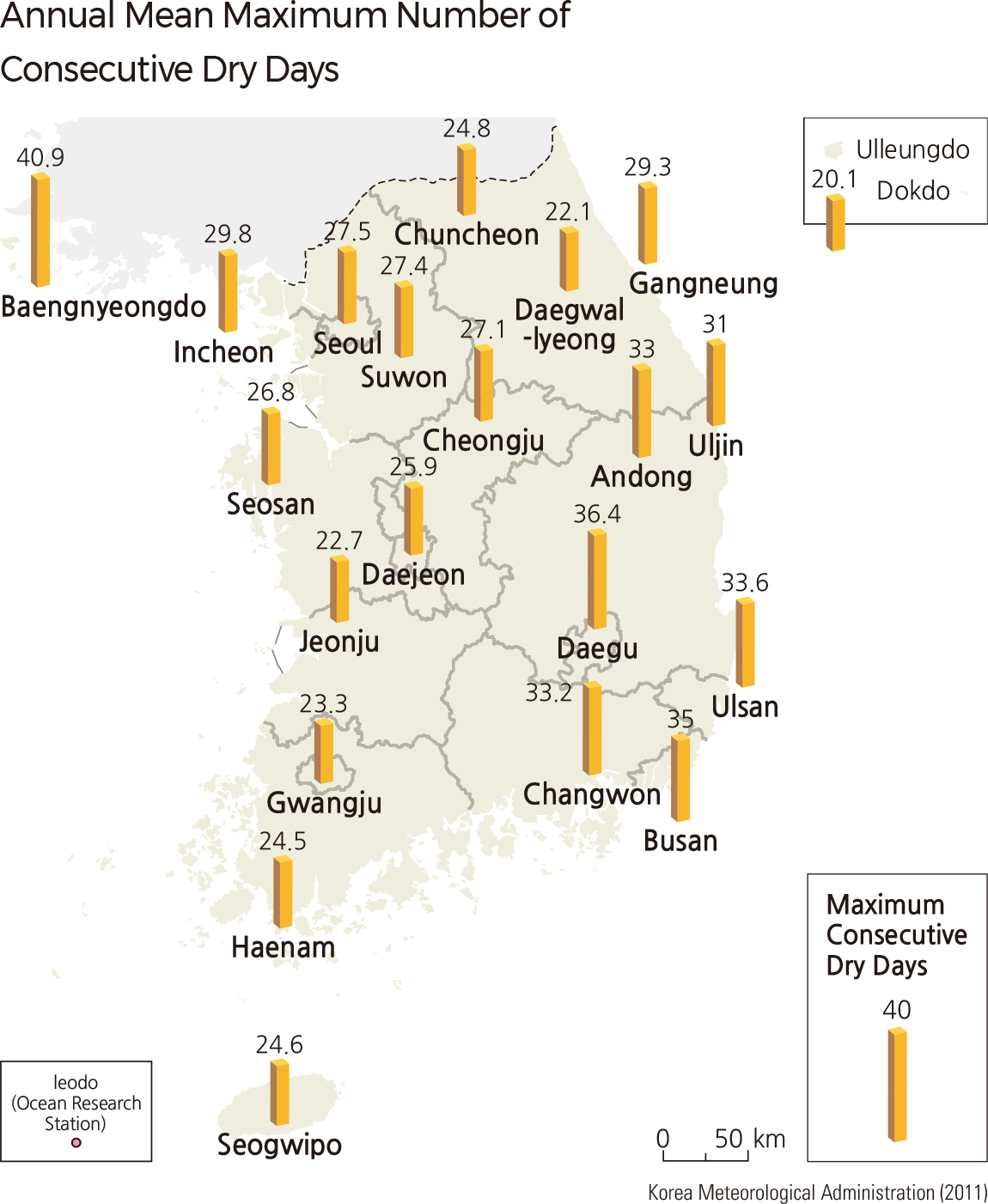English II 2020
The highest 1-hour maximum precipitation on record was measured in Suncheon (145.0 mm) on July 31, 1998. It is attributed to localized heavy rain resulting from a strong ascending air current formed by the combination of the North Pacific High and low pressure associated with the southerly on the windward side of Jirisan. The second highest 1-hour maximum precipitation was recorded in Ganghwa (123.5 mm) on August 6, 1998.
The highest maximum daily precipitation on record occurred in Gangneung (870.5 mm) on August 31, 2002, in the aftermath of Typhoon Rusa, followed by Daegwallyeong (712.5 mm) on the same day; Jangheung (547.4 mm) on September 2, 1981, in the aftermath of Typhoon Agnes; and Pohang (516.4 mm) on September 30, 1998, due to Typhoon Yanni.
The annual mean number of days with daily precipitation greater than 50 mm is largest in Seogwipo (9.8 days). Baengnyeongdo (3.4 days) has the fewest. Seogwipo (4.3 days) also has the largest annual mean number of days with daily precipitation exceeding 80 mm. Andong (1.2 days) has the fewest days. The annual mean number of days with daily precipitation greater than 100 mm is largest in Seogwipo (2.7 days. Baengnyeongdo (0.4 days) has the fewest.
Annual precipitation intensity is a climate index, calculated by dividing annual precipitation by the annual mean number of precipitation days. The precipitation intensity appears relatively strong in the southern region, including Jejudo and the northern part of Gyeonggi-do. For instance, the southern coastal region has a precipitation intensity greater than 20 mm/day in general. The precipitation intensity appears relatively weak in the inland areas of Gyeongsangbuk-do, the western coastal areas of Jeollanam-do and Jeollabuk-do, and Ulleungdo. Annual mean maximum number of consecutive dry days (with daily precipitation below 1.0 mm) is a climate index indicating the severity of dryness. The number is small in Jejudo, Daegwallyeong, and Jeollabuk-do, while the number is large in inland and eastern coastal areas of Gyeongsangbuk-do. Baengnyeongdo (40.9 days) has the longest average stretch of consecutive dry days, whereas Ulleungdo (20.1 days) has the shortest average stretch of consecutive dry days.
The annual mean number of days with new snowfall (depth of snowfall ≥ 5 cm) varies from 0.2 to 13.6 days across regions. Ulleungdo (13.6 days) has the largest annual mean number of days with new snowfall due to effects of the northwest monsoon and northeasterly, followed by Daegwallyeong (13.2 days), which is located at a high elevation. In Gangneung (3.7 days) and Gwangju (3.7 days), the annual number of days with new snowfall is lower than 4 days. Busan (0.2 days) and Changwon (0.2 days) have the fewest annual mean number of days with new snowfall. |





